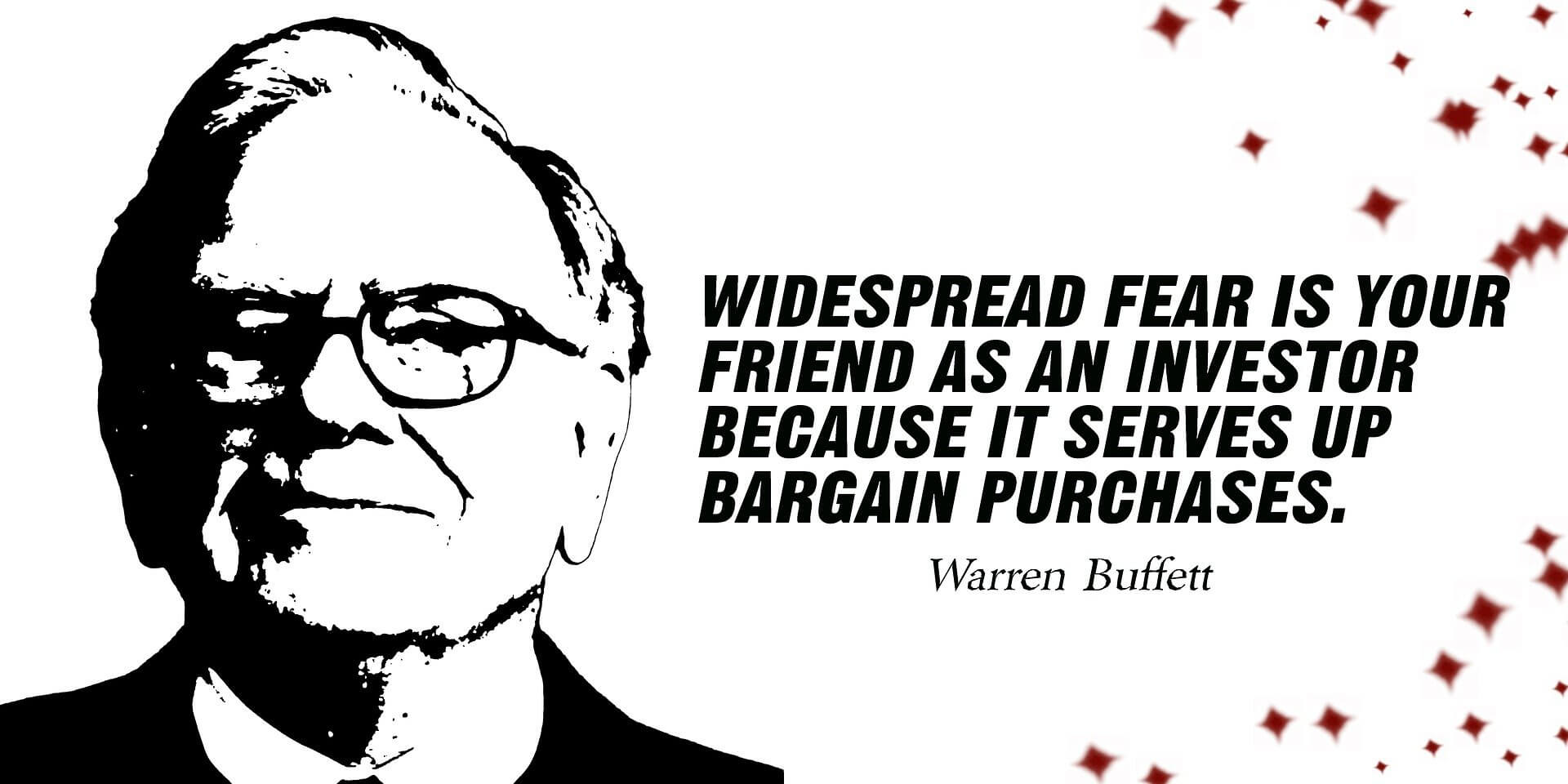Speculating VS Investing
Sometimes you buy a product you have no idea of; maybe it’s an iPhone everyone is hyping you up about.
You hear people and you think this phone will give you a lot of features and make your life better. And it is quite possible that the phone will do that for you, but it is also possible that the phone will turn out to be a massive failure. Its because it didn’t meet up your expectation.
This is speculating. You might buy things without checking any underlying data or reviews.
On the other hand, there is a phone company you always keep track of. You understand what it does and you know this phone will do the job for you, so you go and buy that phone and it provides you with a fantastic service as expected. This can be considered as an investment.
Now imagine the 2nd phone getting some slack from public. And as demand and supply work, the price goes down. But you understand the phone and know that it is still a fantastic device. You end up buying the phone at that time and get the excellent service of it, but at a lower price. If the phone were a stock (as in Stock Market), you’d have successfully done value investing there.
What is Value Investing?
Value investing is NOT like buying a PS5 on Black Friday. Before you understand value investing, you need to understand what intrinsic value is.
It is very easy to think everything is fairly priced, but value investors believe otherwise. What you pay is not always what you get. Here, what you “get” is the intrinsic value and what you “pay” is the price.
It works the same way for stocks; not all stocks are worth what they are priced. This is exactly where value investors cash in.
Put simply, you need to look for stocks that are not priced what they are worth. You have to look for stocks that are “underpriced”. A stock that is underpriced is a stock that is priced less than its intrinsic value.
Remember how we talked about speculating and investing at the beginning? Well, a good number of people speculate instead of investing. This is why the price you see is not the price a stock is worth.
The stock market gets influenced by a lot of factors; not all of them are rational. The market is the summation of its buyers and sellers. And the buyers and sellers are just regular people with regular emotions.
This is why a lot of the people end up overreacting to certain news and affecting the market in irrational ways. The market works like a herd, and the herd controls the demand and supply.
These irrational behaviors influence the demand and supply and therefore the price. This can have no regards to the actual situation and can be based entirely on speculation.
Different types of news and issues lead to stocks being undervalued. There may simply also be good stocks that are going unnoticed by the public. All of these lead to a stock being priced less than what it is worth.
When an investor invests in these stocks, they make good returns in the long term, and that is what value investing is. It is understanding and finding the true worth of stocks and investing in them at a time when the price has gone down irrationally. Soon, the price will recover and reach its true potential, thus creating value for the investors.
Why Warren Buffett Thinks Looking at Price Is Not Investing?
This is a simple case of don’t judge a book by its cover.
Price VS Value is something we have already established. You don’t have to listen to us; the greatest investor of all time, Warren Buffett also addresses this.
The most eminent investor of all time, the 4th richest man on the planet, billionaire Warren Buffett is a value investor. To add to that, he is a student of Benjamin Graham, the pioneer of this form of investing.
Mr. Buffett has given a lot of advice and taken a lot of classes on investing over the years; they all endorse value investing extensively. And doing so, he touches on the crucial point of looking at price VS looking at value.
Warren says people who are trading based on price are simply gambling. The price is an important indicator, but it leads to too much speculation. This makes people overvalue a stock’s price.
A stock is not just some paper that produces money. A stock is a chunk of a business. When you are investing in a stock, you’re not buying a lottery ticket. The more expensive lottery tickets usually have a higher prize pool. This is NOT the case when trading stocks.
This is why Warren Buffett tells us to look at the business. If you need to worry about a stock constantly, you should not buy it. If you have to regularly and closely keep an eye on what a company is doing even after purchasing the stock, you shouldn’t buy it.
He tells us to find “wonderful businesses” at fair prices. Just because of random news or market speculation, many stock prices go up and well above its actual value. Similarly, a good business may lose its stock price because of the overreaction of the market or just the economy.
These changes in price do not represent what the company is worth.
This is why Mr. Buffett also talks about not investing based on the economy. The core of an investment should be the business, how it runs and works. If it is a good business, then it is bound to do well in the long run regardless of the price fluctuations over the years.
Anyone who is investing based on price is gambling, and that is the more appealing thing to do. But it is also the dumber thing to do. Herd buying based on speculation or panic selling based on news, neither is investing.
True investment is assessing the business, evaluating its true value, and holding a chunk of it as stock for the long run.
Benjamin Graham’s Principles of Value Investing
One person you need to follow if you are considering value investing is Benjamin Graham, the pioneer of value investing.
Graham’s book “The Intelligent Investor” is considered as the bible of value investing. And it gives us some sound principles to follow.
Graham talks about Mr. Market in his book. It is a portrayal of the market quoting prices at you. Sometimes it is rational and sometimes it is not. His advice is to hear it out, but not let it control your decisions.
The market will give you different prices all the time. You shouldn’t get swayed by it. Always stick to your logic and analysis. But keep an eye out for when the market quotes a low price for a good stock or a high price for a stock you own. Grab those opportunities when you can.
Graham also talks about NOT trying to beat the market. Getting more than what the market is earning is a fool’s game. It rarely happens and the risk is too high. Earning what the market is making is a much more stable strategy.
Benjamin Graham coined a fundamental term, it is margin of safety. He tries to buy a stock for 2/3 or 1/2 of its intrinsic value. It is essential to understand what you’re investing on, so you can tell what price you’re paying for it. Margin of safety is the disparity between the price of the stock and its intrinsic value. This avoids risks of losses and also presents the opportunity of the stocks reaching the fair value and becoming profitable.
Also, you should decide what type of investor you are. If you are an active investor, you should earn proper knowledge and learn about the market. Then you should actively analyze businesses and stocks before investing.
You may be a passive investor who doesn’t have enough time for research and analysis. You can try investing in index funds that try to imitate the market in that case. The market is volatile so it changes a lot; you should equally divide your investment money and invest in regular intervals. This way, you don’t have to worry about making large investments at once.
Finally, Graham would like you to be an investor and not a speculator. Understand what you’re investing in and don’t react to irrational market situations.
How Do You Do Value Investing?
To put it simply, you have to determine the intrinsic value of a stock to do value investing. And doing so is more subjective than you might think. But there are many useful data related to stocks that can help you determine its intrinsic value.
Earnings per Share: In short known as EPS, this is one of the most basic information that can provide you with an idea of the company. EPS is how much the company has made in profits for a single stock.
To make it clearer, let’s first have a look at the simple EPS formula-
EPS =
So to do this, you need to take a look at the financial statements of the company. Actually, you can find EPS online as well, but first let’s understand it and why it is important.
Net income, dividend paid to preferred stockholders, and the number of common stocks, these are all provided in the financial statements of the companies. Once you take them and apply them in the formula, you’ll have your EPS.
Let’s see an example to have a better understanding. Let’s assume Tesla profited $1 billion in 2020. It paid $100 million in preferred dividends and had 100 million outstanding shares. Its EPS will be (1,000,000,000-100,000,000)/100,000,000 = $9. This will mean each share of Tesla earned $9.
Think of it as a small partnership business. EPS is no different than how much profit each partner can take. But now what you need to do is check the average EPS of the market and also compare the prices.
If a company with good EPS is priced lower than the market average, or if a company with very high EPS is priced similarly to the average market share price, it is likely that the company is eligible for value investing.
You can find EPS of companies and markets on the share market websites such as NASDAQ, or simply just by googling. Then you can do the comparisons yourself.
Price to Earnings Ratio: Also known as P/E ratio, this takes you one step further in analyzing the company’s true value.
This ratio simply tells you the amount of money you need to invest to get $1 in return. If you have a high P/E, it will mean you need to spend a lot to make returns from the stock. Similarly, a low P/E will mean you don’t need to spend much to make returns.
The formula for P/E ratio is-
P/E Ratio =
Let’s use the Tesla example here. As we can already see we need to know the EPS to find out the P/E ratio. Tesla’s EPS was $9 according to our calculation. Suppose, the stock price of Tesla is $90. This would mean the current P/E Ratio is 90/9 = 10x. This means to earn $1 from Tesla, you need to spend 10 times of that, so $10.
Now you need to compare it with the market as usual. On the surface, a P/E higher than the market indicates the stock is priced more than its intrinsic value, while a lower P/E means it is priced less than its intrinsic value.
Generally, this would mean a low P/E investment is a value investment. But there will be more factors playing in. As Warren Buffett suggests, you should analyze the company more than the stock. A good business will always bring in good returns regardless of the market fluctuations.
P/E Ratios can be found just like EPS in share market sites or by googling.
Expected Growth: This is what it really comes down to. If a company is to provide you with returns in future, it needs to grow. When a company is undervalued, it will grow to its true potential in time.
Determining expected growth can be a combination of both quantitative and qualitative factors. Or in layman’s terms, you need to look at the numbers the company is making as well as how the management is running the company.
For the numbers, good EPS, P/E ratio etc. can give you a good idea of if a company is growing. You can also look into other measurements like Price to Book ratio, Free Cash Flow, PEG ratio etc.
For the qualitative judgment, you should still look at the financial statement. There you will see where the company is spending, where it is getting its revenue from, how much dividend it is paying, where it is investing money and all kinds of relevant information. You should also look at the footnotes for more detailed info.
With all that, you should also look into the company’s management. If they are good people with good record, you are in safe hands. If that’s not the case, you should retract despite what the numbers tell you.
And finally, look at the trends. When you get in a store and see people buying a product and claiming it is great, know that that is a good company that will keep growing.
All these factors will lead to your judgment of if a company; therefore, its stock price is expected to grow.
Margin of Safety: Coined by Ben Graham, this is one of the most significant aspects of value investing. Margin of safety is the disparity between the true or intrinsic value of a share and its market price. And the intrinsic value has to be lower than the market price.
When you determine the intrinsic value, you also need to determine how much risk you are willing to take. You can go for 1/3 or 1/2 margin of safety as a general benchmark.
This means, if a stock is priced $10, and you believe its true value is $20, you are allowing yourself a 1/2 margin. If the true value is $15 then you are allowing yourself a 1/3 margin.
It is important to determine the margin of safety you want to use as it is directly connected to risk. This way, even if you determine the intrinsic value of a share wrongly, you are still safe by your margin of safety. This will prevent you from losing money.
Value Investing Strategy
There are some simple strategies you need to take on for value investing. And the very first of it is looking at the company rather than the stock.
Stocks are just papers or digital papers. They change based on how the market is reacting. What you really need to look at it is the company.
One thing people get wrong is they only look at tangible assets. But in today’s world, there is a lot more to it. A company that is spending on R&D is definitely a smart company that will take data-driven scientific decisions. A company that has high goodwill is more accepted by the customers.
This is why many investors favor big or blue-chip companies like Coca-Cola. Companies that have good products, companies that have good management, companies that pay good dividend, these are all important factors to look at. There should also be hidden gems and not just big companies, of course.
Another important strategy is to hold. If you keep trying to sell your stock in hopes of making quick profits, you’re not a value investor. Any good company will give you high gains in the long term. Let the company go through fluctuations and provide you high value in the long run. Hold your stocks for years or even forever!
You can also do something that is buying when everyone is selling and vice versa. The market is run by people and their emotions.
When recession hits, people sell even the best of shares due to panic. If you buy them at a low price and hold, you’re going to make a fortune.
Similarly, people jump on a stock when it is overvalued, so sell it before the price goes down. Not following the crowd or herd is an important part of value investing.
Finally, invest keeping your margin of safety in mind. There are risks and limitations to everything. It’s about playing safe, not playing big.
Does Value Investing Still Work Today?
It is possible that you have heard value investing doesn’t work anymore. Some stats do back those claims up.
But the stock market is a long-term game. Value doesn’t show up overnight. It builds itself over time; it does not depend on speculation. This method has been successful for nearly 100 years, and that is sure to continue.
One of the reasons people believe value investing isn’t working is because they determine it all wrong. Once again, more emphasis must be put on the company, not the stock. There are way too many intangible assets and factors playing in that people don’t consider such as R&D and goodwill.
Considering any share that is low priced is also another reason for this. When the market is suffering, most share prices will be low. This does not mean all of them are value stocks. One must use the above mentioned methods and strategies, and they must also keep up with the changing times.
Value investing is by concept, a winning method. It will always work as long as implemented correctly.
Alternative to Value Investing
Before getting into the direct alternative, let’s take a look at some closer choices.
Until now, this article has asked you to actively pursue value investing. But it is possible that you do not have the time to seek it out in such an active way. In that case, you can follow passive investing methods.
You can invest in mutual funds or ETFs that follow value investing principles. That way, you won’t have to put in a lot of work or effort and just invest sitting on your couch. The fund managers will simply do the job for you.
You can also do what is called index investing, this way you will invest in funds that imitate the market. This method ensures you steady returns in the long run as it does exactly what the market does without trying to beat it. And if you look back in the past, you will see the overall market has grown tremendously.
Now the direct alternative, it is called growth investing. In this method, you seek new or emerging businesses that are displaying a high growth rate. You will invest in them hoping they will have exponential growth and provide you with massive gains.
This method is much riskier; it is also closer to gambling. But if done right, this method does a great job. It has been doing well statistically in recent years.
Final Thoughts
Value investing is a tried and tested method that does not take unnecessary risk, has been providing steady returns for nearly a century, and is endorsed by the world’s greatest investor.
It is undoubtedly a method you would want to follow.
People can call it easier said than done, but it is also definitely easier than how hard it is called. Invest in what you understand, be logical, find a good business rather than a good stock.
Don’t try to beat the market; look for steady growth.
Value investing has worked for countless people, and now it is time for it to work for you.





